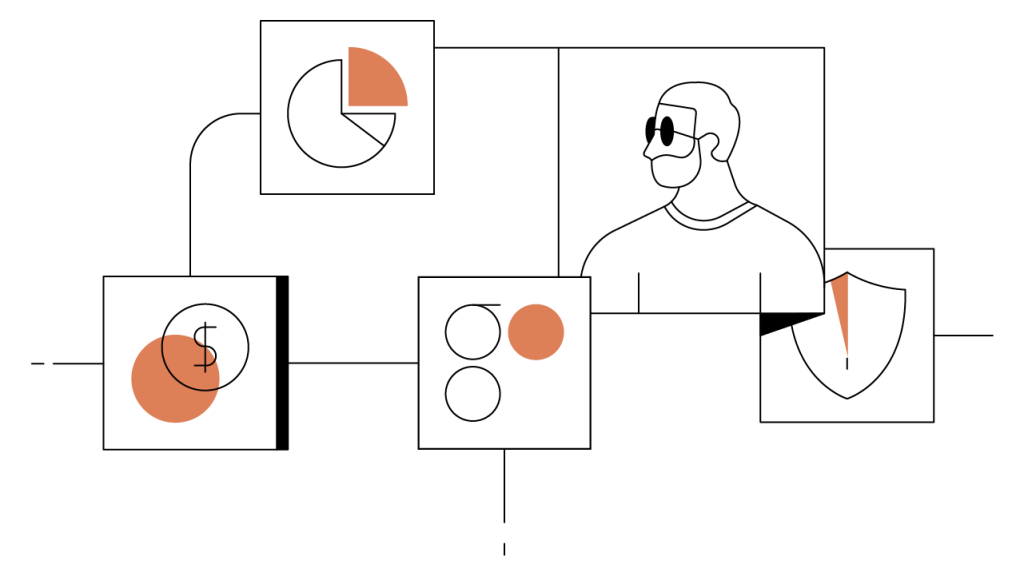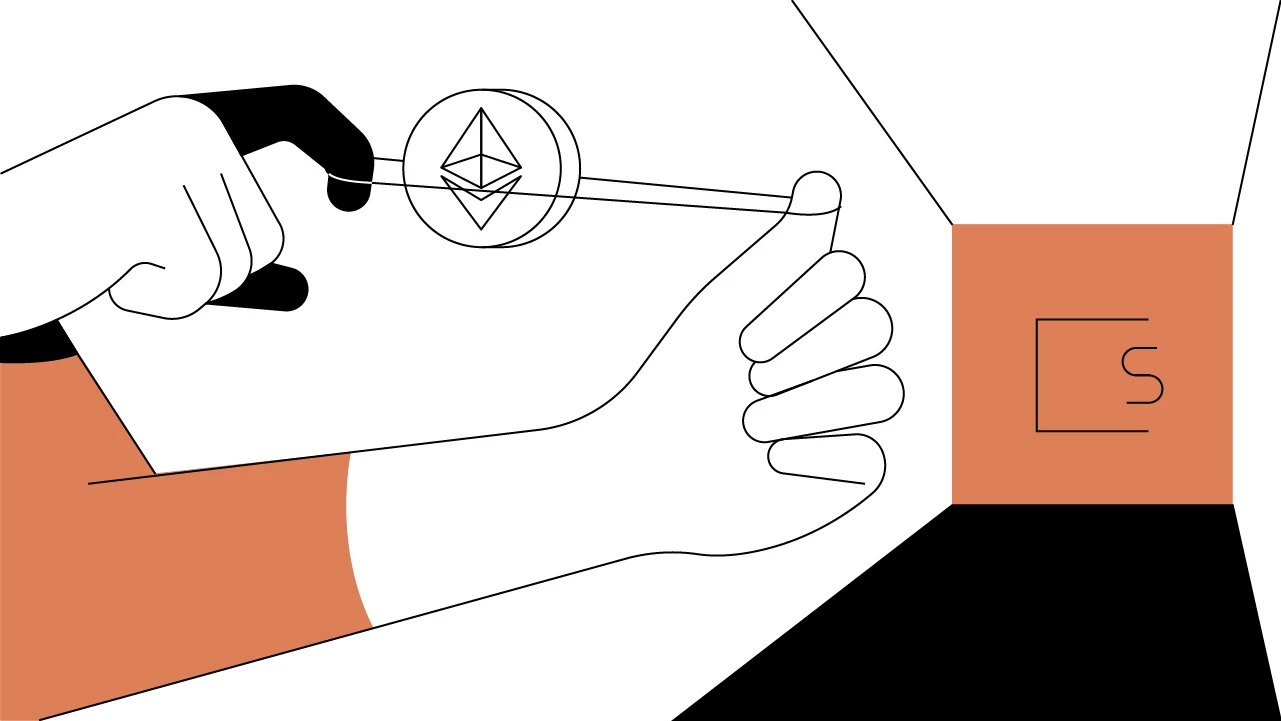What Is OMG Foundation and How Does It Work?
OMG Foundation can process thousands of transactions per second, which can reduce the cost of operating on Ethereum by one-third.
Updated March 20, 2025 • 4 min read

Summary
OMG Foundation is a Layer-2 scaling solution that increases the transactional throughput of Ethereum. The OMG Foundation creates a value transfer layer on top of Ethereum that bundles together Ethereum transactions and validates them through a speed-optimized child chain before sending them back to the Ethereum blockchain for confirmation. The OMG Foundation is able to process thousands of transactions per second (TPS), and can reduce the costs of operating on Ethereum by one-third. The OMG Foundation’s native OMG token can be used to pay for transaction fees and for staking when the platform launches its Proof-of-Stake (PoS) protocol.
OMG Foundation’s Origins
Initially called OmiseGO upon launch in 2017, OMG Network was a subsidiary of Genesis Blockchain Ventures, a Hong Kong-based venture capital (VC) firm, and has partnered with Enya, the largest provider of secure multiparty computation in the world; OMG Network subsequently changed names again and is now known as OMG Foundation. OMG Foundation’s technology is based on Plasma, a framework conceived by Ethereum creator Vitalik Buterin and blockchain technologist Joseph Poon. OMG Foundation was among the first Layer-2 scaling solutions proposed for Ethereum, which are critically important secondary tech integrations that increase a network’s transactional throughput.
Unlock the future of money on Gemini
Start your crypto journey in minutes on the trusted crypto-native finance platform
Plasma is a framework for moving bulk transactions off of the Ethereum blockchain onto “child chains” — blockchains that exist alongside the Ethereum blockchain connected to the main network. Plasma child chains are optimized to speed up transaction processing before data is returned for final validation on the Ethereum root chain. The OMG Foundation is able to process thousands of transactions per second (TPS) and can reduce the costs of operating on Ethereum by one third.
OMG Foundation’s native token, OMG, was minted to raise funds to develop the project through an Initial Coin Offering (ICO) in 2017. Shortly thereafter, OMG was airdropped to the Ethereum community — the first instance of such an airdrop on Ethereum. OMG is now used for paying transaction fees, and once OMG launches Proof of Stake (PoS), the token can be used as a staking mechanism and for network governance.
Layer-2 Scaling on Ethereum
Layer-2 scaling solutions are an essential part of Ethereum development, so let’s review before we get into the mechanics of the OMG Foundation. Scalability in this context refers to a blockchain’s ability to process a high volume of transactions both quickly and cheaply. While centralized databases like Visa are capable of processing tens of thousands of transactions per second, Bitcoin and Ethereum are only able to handle around 5 and 14 transactions per second, respectively. This is because of the intensive mechanisms for data verification and consensus on blockchain networks that are required to maintain decentralization and security.
Without implementing successful scaling mechanisms, Bitcoin and Ethereum would be technically unable to achieve the high-volume utility of global transaction layers like Visa. In fact, both Bitcoin and Ethereum have already encountered congestion issues, backlogs, and periods of increased fees on multiple occasions. Scaling has been a subject of intense scrutiny and development in the blockchain industry.
There are upwards of fifty projects building scaling solutions for Ethereum that champion two primary methodologies. State channels like Raiden and Celer Network create Ethereum-adjacent blockchains that transport Ethereum data off-chain for transactions and return back generalized-state data reports. Side chains like OMG Foundation use the Plasma method of layering a centralized, but transactionally efficient mirror chain on top of the Ethereum network, where bulk transactions are executed before being sent back to Ethereum for final validation.
How Does OMG Work?
The OMG Foundation protocol utilizes an update of Plasma — called More Viable Plasma (MoreVP) — to significantly increase transaction throughput. More specifically, the OMG Foundation bundles transactions together, compresses them into one transaction, and verifies them on the OMG Foundation child chain. The child chain then returns confirmed transactions to Ethereum for confirmation on the blockchain. This bundling technique enables the OMG Foundation to process thousands of transactions per second. Transaction costs are one-third of what they would cost on Ethereum because gas fees are paid on the bundled, compressed transaction instead of each individual transaction.
The OMG Foundation child chain is controlled by a single block-producing node called an Operator, which validates transactions before forwarding them to Ethereum. While Ethereum has more than 8,000 nodes, OMG Foundation has only one. Proponents of state channels argue that this centralized mechanism compromises the distributed ethos of blockchain. OMG Foundation, however, decentralizes security through a network of computers called “Watchers,” which monitor the Operator and the network for suspicious activity. Anyone can become a Watcher.
Though the child chain is operated by a centralized block producing node, the OMG Foundation’s security is decentralized because Ethereum’s network of nodes maintains finality on transaction approval. Likewise, the network of Watchers is also decentralized, providing the security and vigilance inherent in a decentralized network. Additionally, the child chain is non-custodial, which means that users’ funds never leave the Ethereum network. As a result, users will always be able to recover their funds, even if the OMG Foundation child chain goes offline — a feature also known as trustlessness.
Let’s run through a traditional Ethereum transaction, and then a transaction that is routed through OMG Foundation.
In a typical Ethereum transaction:
You use your wallet to initiate a transfer of assets from your wallet address to a different wallet address or smart contract address.
Then, Ethereum assigns a transaction hash — a transaction identification number — to your transaction.
The transaction will subsequently be broadcast to the Ethereum network and put in a pool with other transactions.
Miners will eventually select your transaction, verify it, and include it in a block of the blockchain, completing your transaction.
When a transaction is routed through OMG Network:
You first deposit ERC-20 tokens or ether (ETH) into your Ethereum address.
You initiate a transaction to deposit your assets into an Ethereum smart contract.
Both the Ethereum and OMG Foundation’s record this transaction, and the Operator creates a representation of your assets on the OMG Foundation child chain.
You can then use your wallet to initiate a transfer of assets from your wallet address to a different wallet address.
The Operator takes your transaction and bundles it into a group with other transactions and records them in a block.
The Operator sends a transaction hash of all the individual transaction hashes in the block to Ethereum for validation, completing the transaction.
When you’re done transacting on the OMG Foundation child chain, you can initiate another transaction to withdraw your funds from the Ethereum smart contract.
OMG Foundation is ERC-20 interoperable, and thus decentralized applications (dApps), wallets, custodians, and exchanges can all take advantage of its scalability benefits. For example, the OMG Foundation integrated with the Bitfinex exchange to allow traders to transfer, deposit, and withdraw its native stablecoin tether (USDT) via OMG. Moreover, the OMG Foundation provides enterprise clients with private versions of the network for use cases such as loyalty points programs. OMG has also proposed that the platform could be used for central bank digital currencies (CBDCs). A highly anticipated and influential project upon announcement, OMG Foundation has now proven the feasibility of Layer-2 scaling solutions, alongside the functionality of Plasma and Ethereum sidechains.
Cryptopedia does not guarantee the reliability of the Site content and shall not be held liable for any errors, omissions, or inaccuracies. The opinions and views expressed in any Cryptopedia article are solely those of the author(s) and do not reflect the opinions of Gemini or its management. The information provided on the Site is for informational purposes only, and it does not constitute an endorsement of any of the products and services discussed or investment, financial, or trading advice. A qualified professional should be consulted prior to making financial decisions. Please visit our Cryptopedia Site Policy to learn more.

Is this article helpful?


